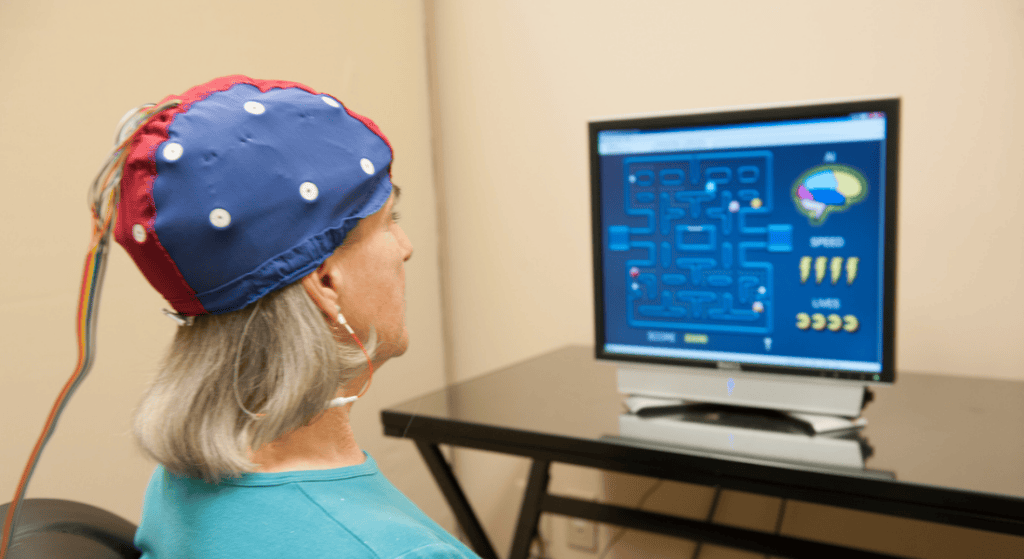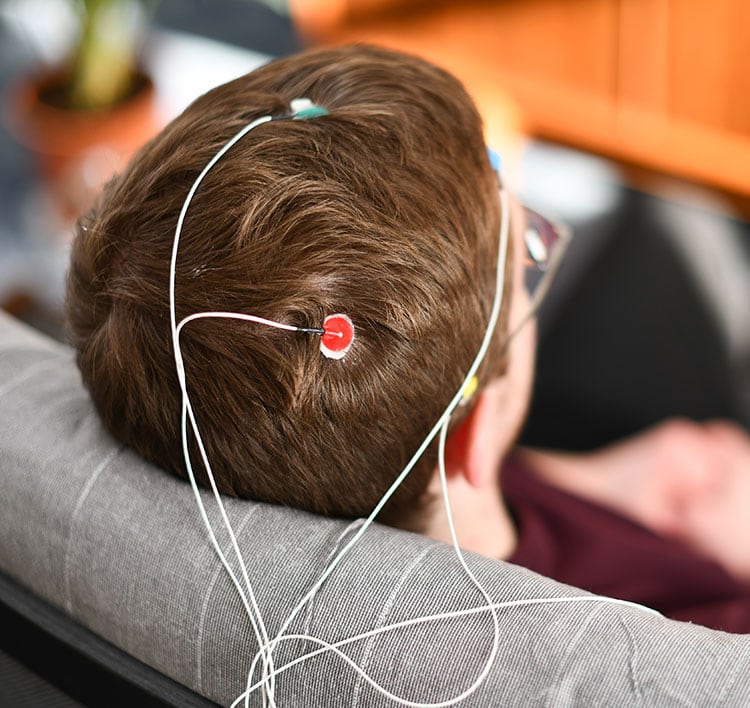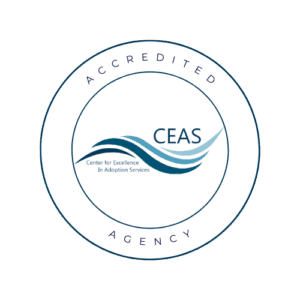The brain is one of the most complex systems in the body, and no two brains function exactly the same. While many people benefit from traditional therapy, others may not. Those that have been resistant to treatment in the past may want to explore other ways to regulate their brain activity and improve cognitive function. That’s where neurofeedback comes in—a non-invasive, medication-free approach designed to help the brain learn healthier patterns.
In this blog post, we’ll break down what neurofeedback is, how it works, and who it can help.
What is Neurofeedback?

Neurofeedback is a type of biofeedback that trains your brain to function more efficiently. It works by monitoring brainwave activity in real-time and provides immediate feedback to help the brain self-regulate. It monitors and records the activity through sensors placed on the scalp. This process allows people to improve things like focus, emotional regulation, and overall cognitive performance.
Unlike traditional therapy, which often focuses on thoughts and behaviors, neurofeedback directly targets brain activity. By identifying irregular brainwave patterns and encouraging healthier function, neurofeedback offers a personalized approach to mental well-being.
How Does Neurofeedback Actually Work?
The neurofeedback process typically includes the following steps:
1. Brain Mapping (QEEG)
Before neurofeedback training begins, a trained clinician, such as a neurophysiologist or QEEG-certified specialist, needs to create a “brain map. Like with many other things in life, it’s necessary to see where we are in order to understand where we need to go. The brain mapping stage is crucial to setting up your unique training plan that will determine which areas of the brain to target and how to target them effectively.
This map is called a quantitative electroencephalogram (QEEG). This process involves placing sensors on the scalp to measure electrical activity in different areas of the brain. Once the results are created, they’re then analyzed to identify any patterns that may be linked to whatever mental health struggles are significantly impacting your life. Some common problems include anxiety, ADHD, sleep issues, or other cognitive challenges.

In the image above, the green represents activity that’s within normal levels, red represents above normal levels, and blue represents below. It’s important to remember that these colors don’t represent “good” or “bad” brain waves. Each one can be different in what the target goal is and brainwave targets can vary based on your personal therapy goals.
This step in the neurofeedback process is often conducted by a third party, like our partner Neurofeedback Services of New York. You can then take your results of the QEEG to any licensed neurofeedback provider to set up an ongoing training plan (like Spence-Chapin!).
2. Personalized Neurofeedback Training

Once the brain map is analyzed, a customized neurofeedback training plan is created. This is where you and your clinician will work together to determine what your goals and focus areas are—using the results of your brain map to create a path toward healing. This path is determined by selecting your desired brainwave frequencies that match your therapy goals.
Training sessions typically involve sitting comfortably while watching a movie with the neurofeedback cap and headphones on. During this time, sensors monitor brain activity, and the program provides real-time reports.
3. Real-Time Feedback for Brain Training
The feedback comes in the form of subtle visual and auditory cues. If your brainwaves move toward a more regulated state, the screen remains bright, and the sounds remain steady. If your brain activity becomes dysregulated, the screen may dim, and clicking sounds in your headphones will signal the shift. Over time, this operant conditioning teaches your brain to adjust and optimize its own functioning.
4. Long-Term Benefits & Progress Tracking
Most people begin to notice improvements after several sessions, with long-term benefits including enhanced focus, emotional stability, better sleep, and reduced symptoms of anxiety or ADHD.
It’s important that you trust your therapist and are honest as the training sessions progress, so you can continue to work toward your therapy goals as a team. Your therapist should be monitoring results over time to understand your progress and adjust accordingly.
How Can Neurofeedback Help Me?

Neurofeedback is used to support a wide range of mental health and neurological conditions, including:
✅ Anxiety & Stress – Helps regulate overactive brainwave patterns associated with excessive worry. This involves decreasing beta waves and increasing alpha waves, fostering a calm and regulated emotional state.
✅ ADHD & Focus Issues – Improves attention and impulse control by training brain activity. Specifically balancing theta and beta waves, which are responsible for attention and impulsivity.
✅ Sleep Disorders – Supports better sleep by optimizing brainwave regulation.
✅ Trauma & PTSD – Assists in rebalancing brain activity affected by past traumatic experiences.
✅ Depression – Helps improve mood regulation by encouraging healthier neural activity.
Neurofeedback can be particularly helpful for those who have experienced traumatic events, which can result in exhibiting some of the above neurological symptoms. Individuals connected to adoption have also been shown to see benefits from neurofeedback as there are issues and challenges that can be part of the adoption experience that are able to be addressed through this approach. At Spence-Chapin, our therapists are adoption competent and understand how to use neurofeedback as a healing tool.
Why Choose Neurofeedback?
Neurofeedback is non-invasive, drug-free, and highly personalized, making it an excellent option for individuals looking for alternatives to medication or talk therapy alone. By providing targeted, real-time brain training, it offers a unique way to enhance mental performance and well-being.
Many have seen profound improvements in their lives and we encourage anyone who is interested in trying it to contact us to learn more. You can reach out to our therapy team at [email protected] with any questions you may have.






